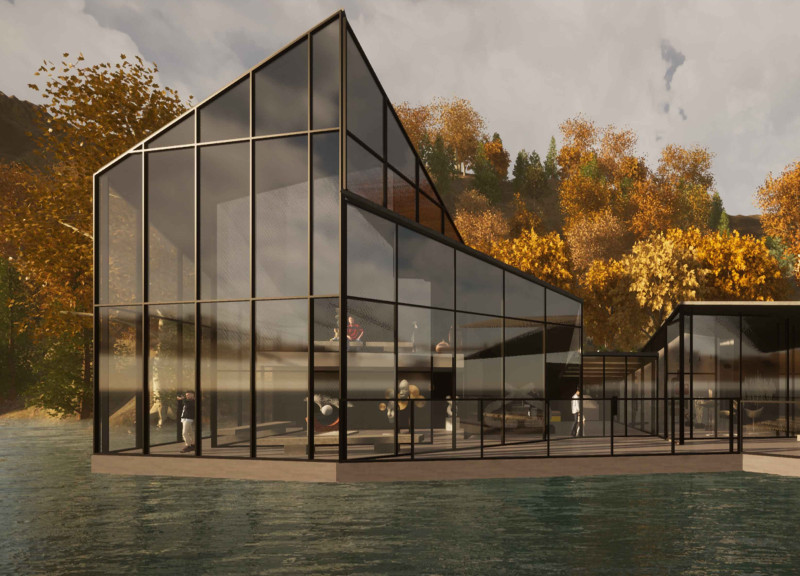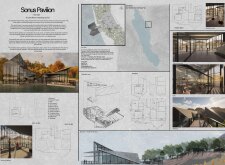5 key facts about this project
The Sonus Pavilion is located near Crummock Water in the Lake District of Cumbria, North West England. It focuses on the connection between sound and society, providing a space for gatherings. The design draws inspiration from the movement of sound waves, and the structure blends with the natural landscape to create a peaceful environment.
Form and Aesthetics
The design features flowing shapes that echo the nearby peaks, fostering a relationship with the landscape. These contours enhance the visual connection between the pavilion and its surroundings, ensuring that it fits well into the existing beauty of the area. This layout encourages visitors to explore and interact with nature, making the experience more engaging.
Exhibition Spaces
The pavilion contains exhibition halls meant for showcasing human achievements across various mediums. The layout allows for interactions that highlight the theme of music as a form of communication. Spaces are arranged to facilitate movement and engagement, creating opportunities for visitors to connect with the activities taking place within the pavilion and the landscape beyond.
Materiality and Construction
Concrete is prominently used in the sloping roofs, providing the necessary support while allowing for the gentle shapes that characterize the design. The pavilion also features glass on the lakeside, which lets in natural light and enables views of Crummock Water and the nearby hills. This transparency helps to integrate the pavilion with its setting, encouraging a connection between the interior and exterior spaces.
Environmental Considerations
The design takes into account the importance of its natural surroundings, implementing a no motorized boat policy on Crummock Water. This measure helps to maintain the area's calm atmosphere. The pavilion aims to foster connections through sound while respecting the environment, ensuring that visitors can enjoy the beauty of the site.
The structure’s flowing form invites movement and exploration, with its design reflecting the essence of sound as a connecting element in the built environment.



















































